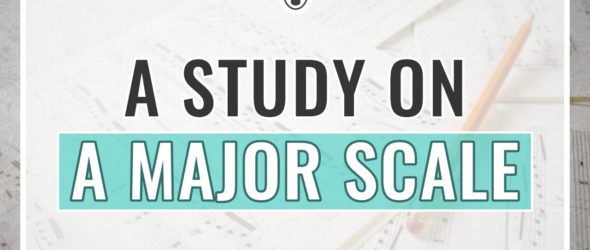One of the first violin scales I teach my students is the A Major scale. The reason is that the one-octave scale uses the most common hand frame position on the two higher strings, A and E.
The two-octave scale begins on the lowest G string and introduces the high third finger into your playing, while the three-octave scale for more advanced players takes us up to the seventh position on the fingerboard. A6 is the last note of the scale. If you advance even more and dare to play a 4-octave scale you will reach A7 note – the highest note on the violin.
Keep reading to learn all about the A major scale, including well-known pieces of music that are composed in this key!
Here you can download a free booklet with D major scales, arpeggios, and a bonus exercise:
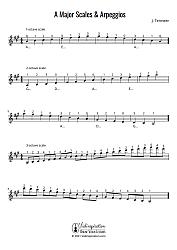
A Major Scales & Arpeggios
and a Bonus Exercise
What Is the A Major Scale on the Violin?

The A Major scale on the violin follows the Major scale pattern of whole and half steps: whole-step, whole-step, half-step, whole-step, whole-step, whole-step, and half-step. Therefore the scale has three sharps. The notes of the A Major scale are A, B, C#, D, E, F#, and G#.
How Many Notes Are in A Major Scale on the Violin?
There are seven letters, yet eight notes progressing in pitch in a specific order in any major or minor scale. All scales begin and end on the keynote called the tonic. Since we are talking about the A Major scale, the tonic of is A.
The chart below shows which degree or position in pitch from the keynote, the notes in the A Major scale are numbered.
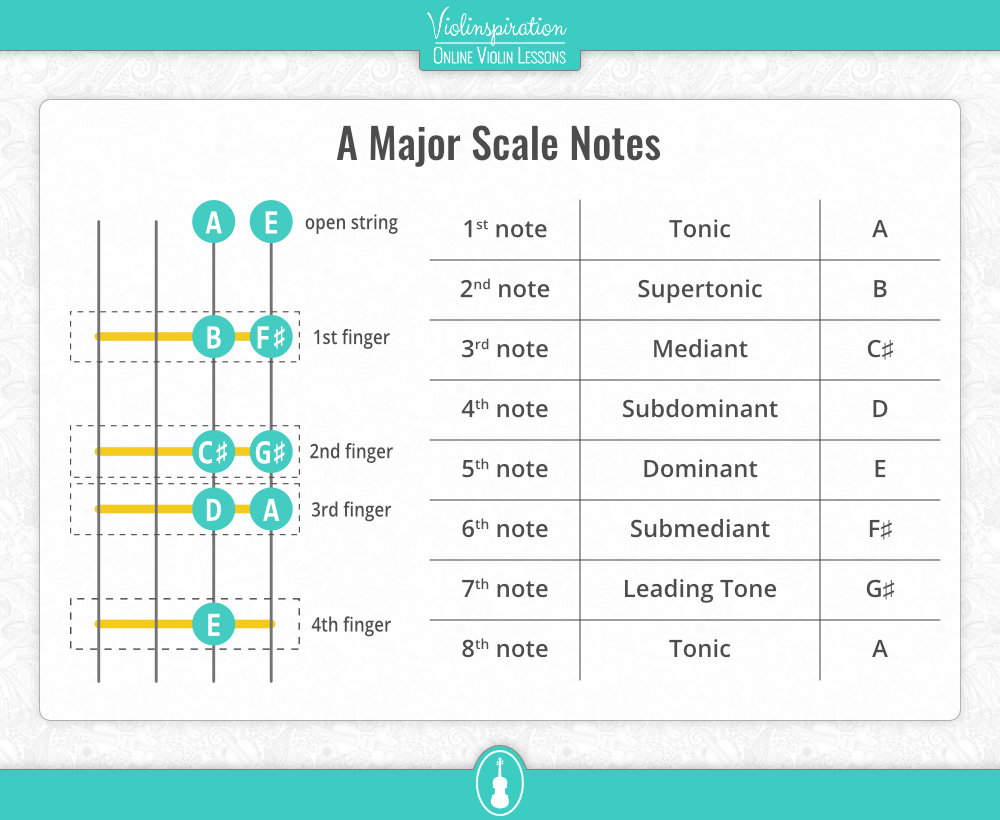
How Do You Play the A Major Scale on the Violin?
To play the A Major scale on the violin, start with the open A string. Then place your first finger on the first tape – B. Continue by placing the second finger on the second tape (high second finger) to play C#. Put the third finger close to the second and you’ll get D. Repeat the same pattern on the E string and play: E, F#, G#, and A notes.
Below is a video tutorial showing you how to play the A Major scale on the violin in the first position. To learn about two-octave and three-octave A Major scales, continue reading below the video.
One-octave A Major Scale on the Violin
Here is the A Major one-octave scale in sheet music notation with fingerings and string indication.
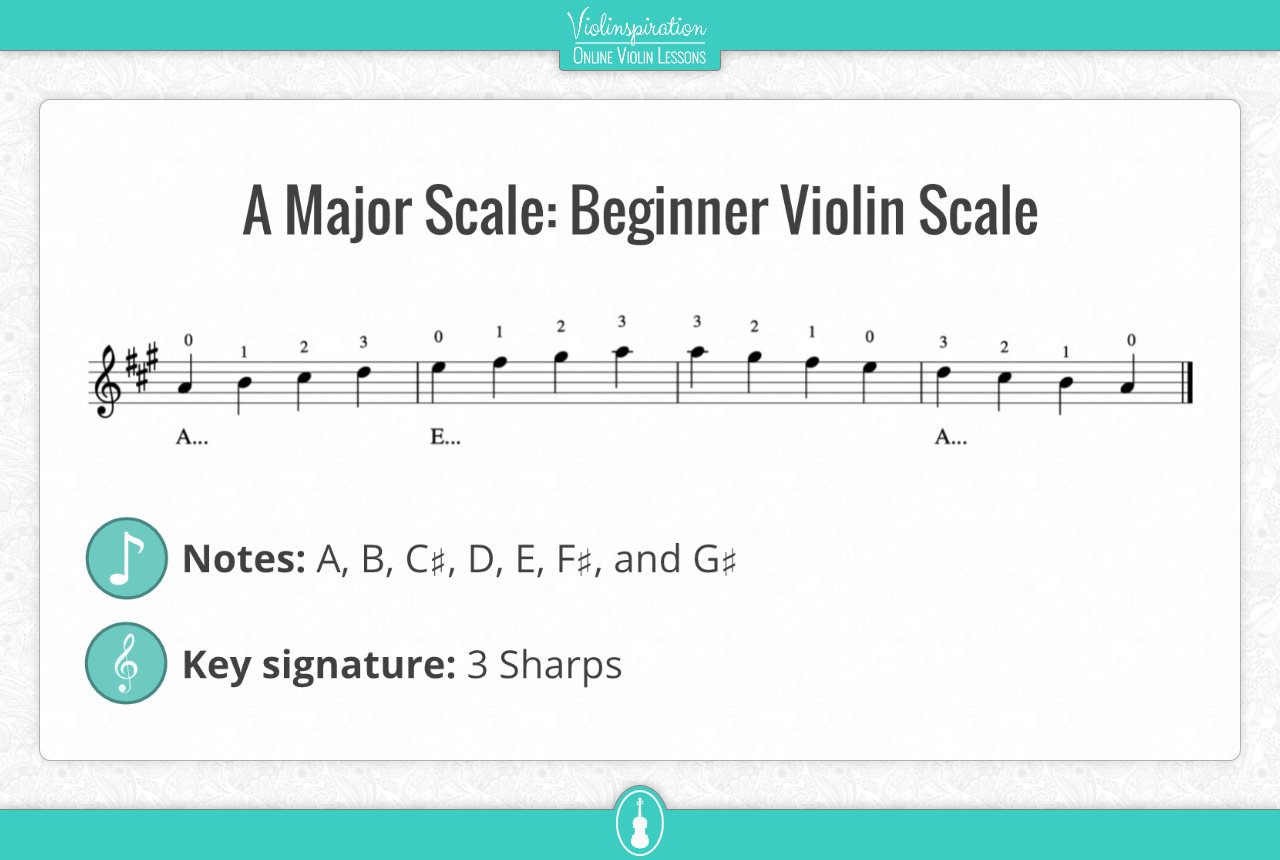
Make sure you keep each finger down as you play the higher note.
Remember to change your elbow level when switching to the open E string and play the next four notes keeping the same hand frame and using the same finger pattern.
To finish the scale, play all the notes in reverse order. The difference is, instead of pressing your fingers down onto the string, you lift them off of the string instead. When switching to the A string, adjust your elbow level, keep the same hand frame, and drop all your fingers down in one motion onto the string. Lift your third finger, your second, and then the first.
How Do You Play a Two-octave A Major Scale on the Violin?
To play the two-octave A Major scale in the first position use all four strings. On G and D strings use high second and third fingers but on A and E strings only high second finger. Your first and second finger positions remain the same as in the first octave.
Play the notes in descending order to complete the A Major two-octave scale.
Below are the notes and fingerings for the two-octave A Major scale.
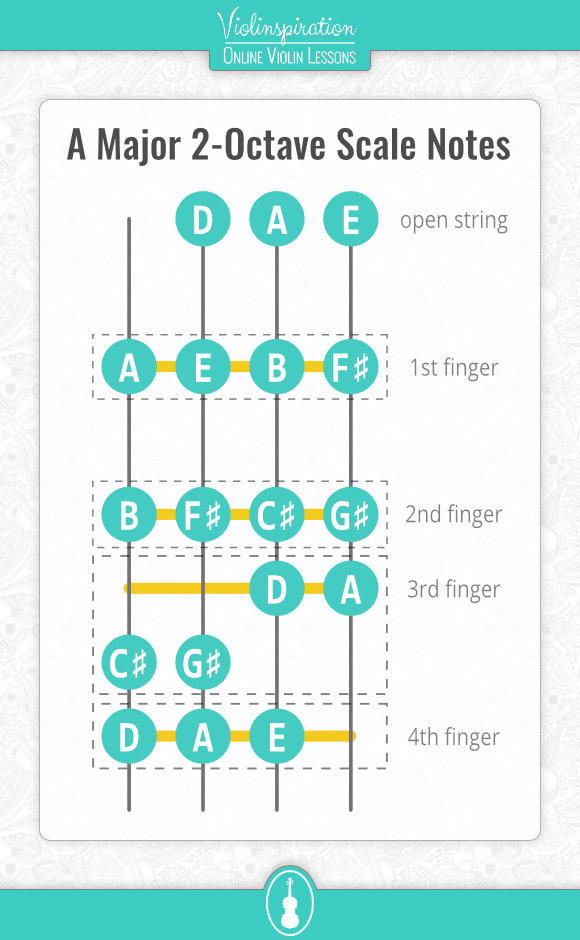
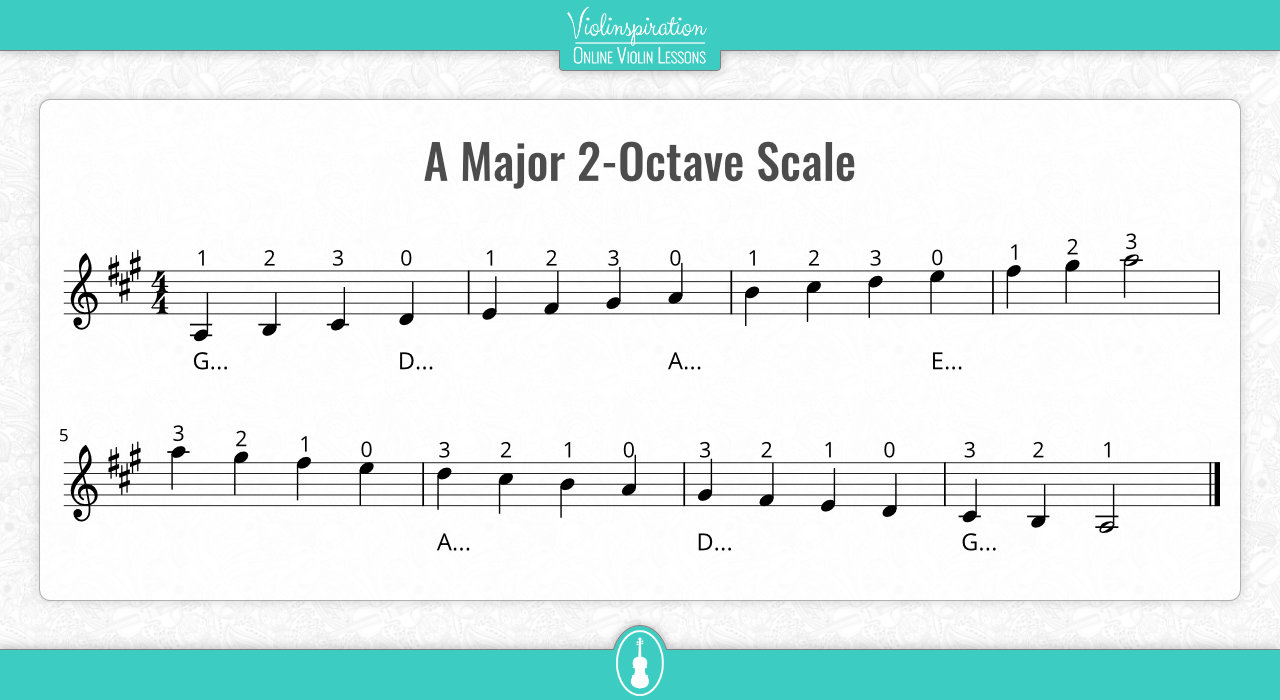
Three-octave A Major Scale on the Violin
It is a good moment to start learning the three-octave A Major scale when you can play the two-octave A Major scale in tune and feel comfortable shifting to the higher positions.
To play it, follow the fingering in the chart below. Pay close attention to your intonation and the fingerings when you shift. The last note of the scale is the A6. It is three octaves higher than the lowest A you play as the first note in this scale with your first finger on the G string.
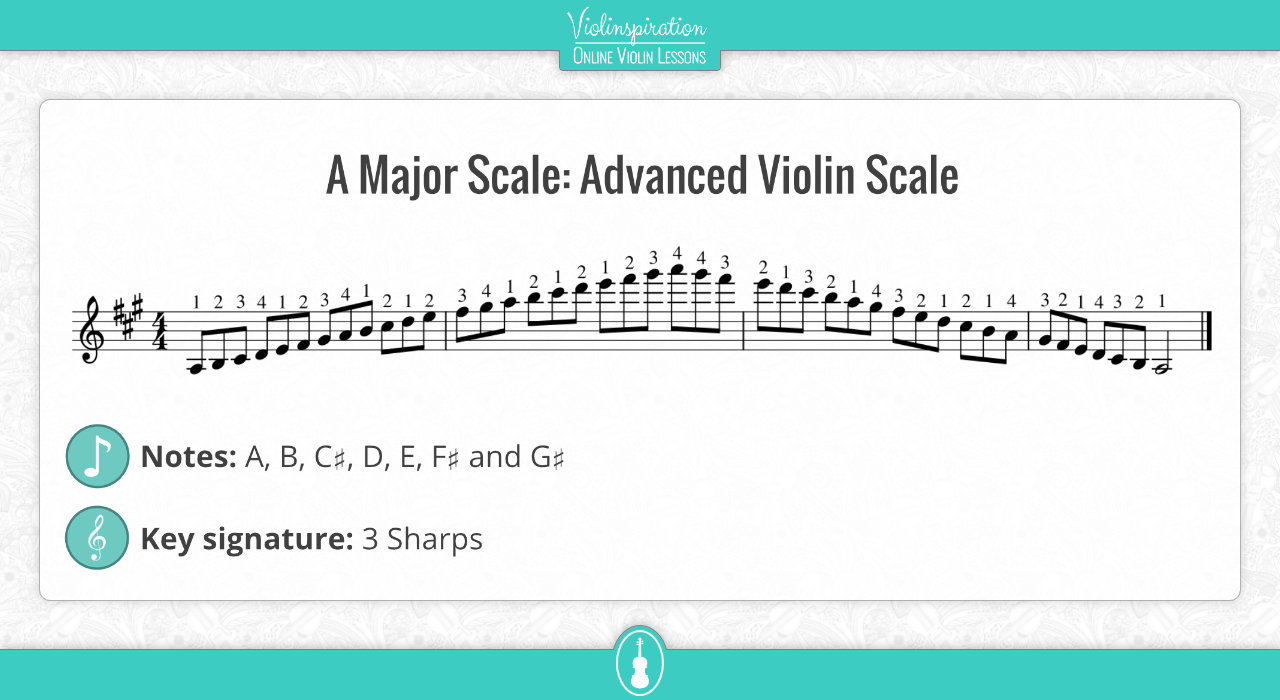
How Do You Play A Major Arpeggio on the Violin?
When we play an arpeggio, we are playing every note of a chord separately. This means we play the first, third, fifth, and eighth notes of a scale. Therefore, to play A Major arpeggio on the violin, we play the notes A, C#, E, and A.
To play the one-octave A Major arpeggio, use the A and E strings, and the two-octave arpeggio use all four strings. The three-octave A Major arpeggio shifts up the fingerboard to the seventh playing position.
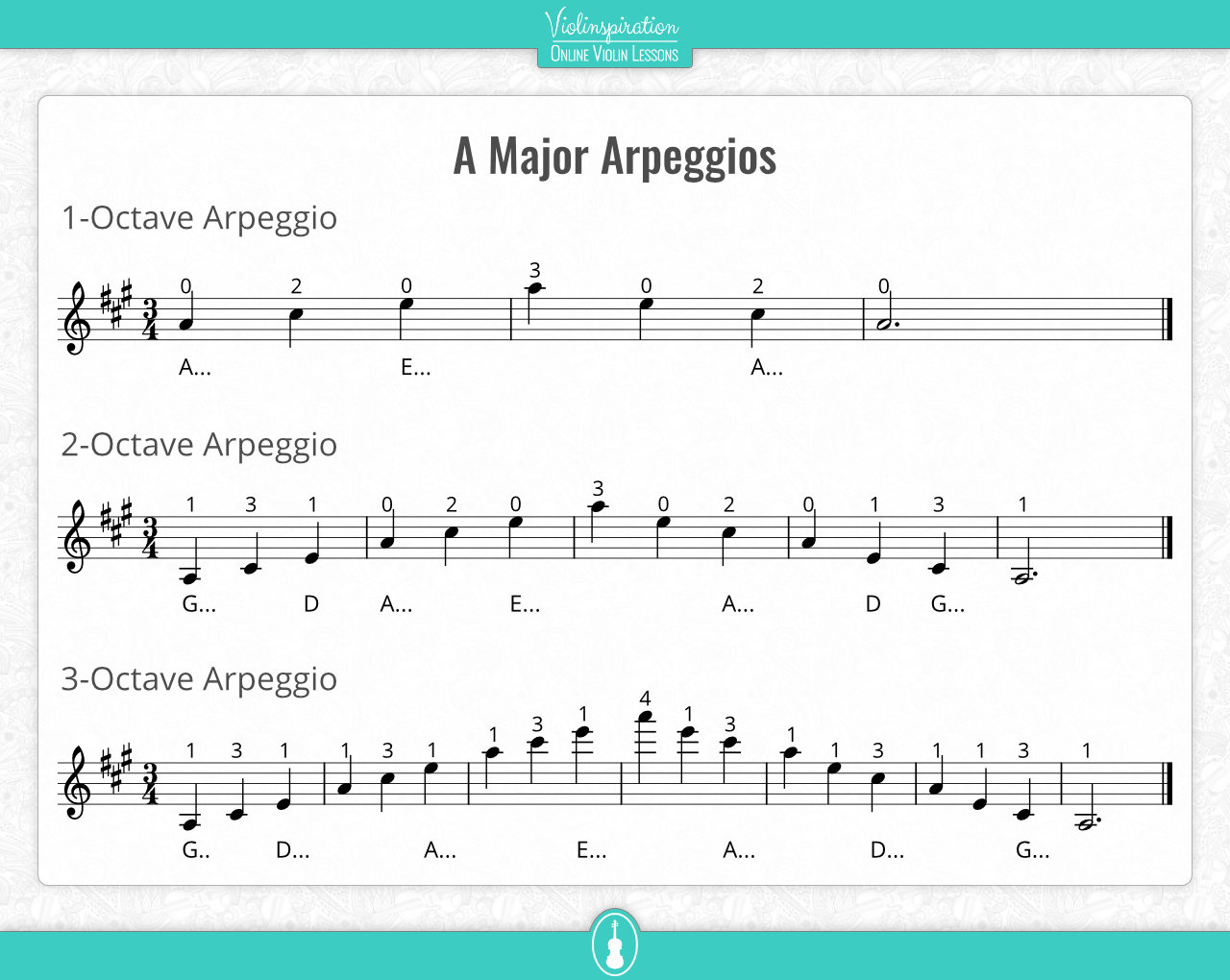
Sheet Music of the A Major Scale & Arpeggio
Below you can download sheet music for the A Major scale and arpeggio in one, two, and three octaves. Print it and put it on your practice stand to remember about your daily portion of scales and arpeggios!

A Major Scales & Arpeggios
and a Bonus Exercise
How to Practice the A Major Scale?
I recommend you to practice A Major Scale by first memorizing the notes of the one-octave scale and playing it with one note per bow stroke. Then turn on the metronome, set it at 60 bpm or even a bit slower, and play the scale up and down a few times. When you feel more comfortable, speed up the tempo a bit.
After that, try the same with the two-octave scale.
Then it’s time to add some bowing technique. Here I’d recommend you to practice slurs with beautifully connected notes which is called legato. If you are just starting your journey with the violin, play just 2 notes per bow stroke. When it feels easy, try playing 4 notes per bow stroke.
You can always try adding even more notes to make it a bigger challenge!
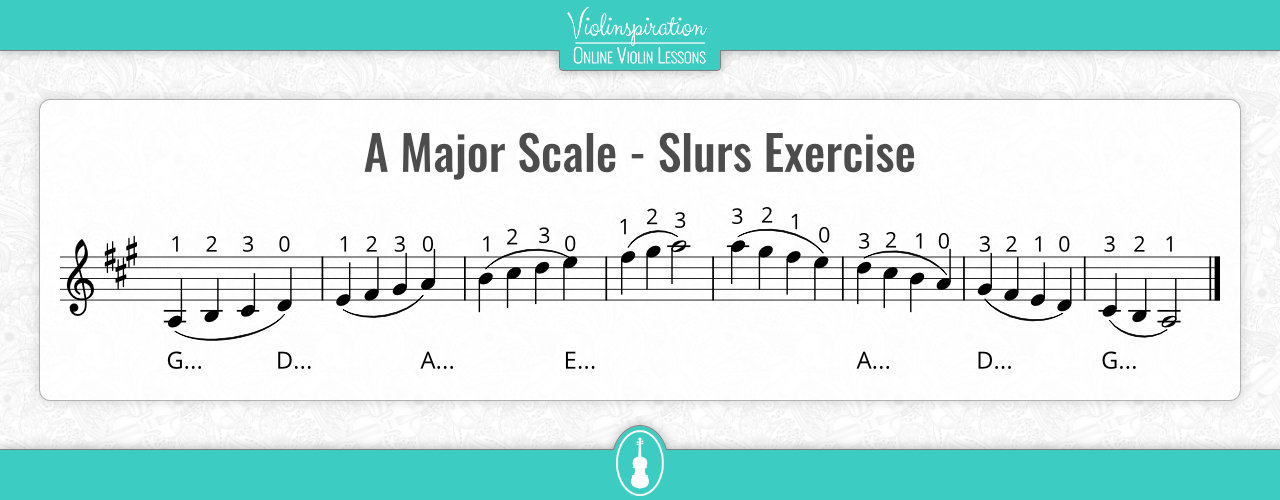
5 Well-known Pieces in A Major
1. Mozart – Violin Concerto No.5, K.219, ‘Turkish’
It is not known for whom or on what occasion Mozart wrote his concertos for string instruments. What is known is they were all written between 1773 and 1779, and that his Violin Concerto No. 5 is the last piece he wrote in the A Major key.
This piece has the nickname Turkish because of the final movement. Here Mozart added ornamentation and thumping for a percussive effect. He achieved this by having the basses and cellos play with the stick of their bow, col legno.
2. Paganini – Caprice No. 21
The Twenty-four Caprices by Paganini are essential etudes. Each caprice teaches a different skill to further violin playing techniques such as double stops, shifting positions, playing notes quickly, etc.
The twenty-first Caprice in A Major has a focus on double-stopped sixths, as well as up-bow staccato.
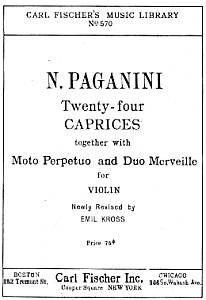
24 Caprices by Paganini
Free Violin Sheet Music
3. Boccherini – Minuet from Op. 11 (G 275)
This “Celebrated Minuet” played in A Major is the third movement in Boccherini’s String Quintet in E Major op. 1, departing from the original key.
This particular minuet in ¾ time is used to a great extent in movies, TV shows, and video games! It is also included in the Suzuki Method for violin, book two.

Suzuki Violin School – Volume 2
International Edition
Support us for more FREE content No extra costs for you Recommended by Violinists
4. Beethoven – Symphony No. 7, Op. 92
Beethoven introduced us to this now-famous piece by conducting it at the premiere in Vienna on December 8th, 1813.
The concert, a benefit for wounded soldiers in the Napoleonic wars, included many famous players. The most notable was violinist Louis Spohr. Spohr went on to invent the chinrest we use on the violin today.
5. Chopin – Polonaise, Op. 40 no. 1 “Military”
At the beginning of WWII, Poland’s national public-service radio station played this piece daily. Its notation is mostly forte, meaning to play loudly for most of its composition. It was a spectacular performance meant to rally the people and protest the German invasion of their country.
Final Thought
Playing scales and arpeggios is a fast way to develop the muscle memory needed to find correct notes on the fingerboard, train your ears to hear correct pitch, and get familiar with different left-hand frame positions.
A Major scale is a great scale to learn because the two-octave scale uses both low and high second and third fingerings. Plus, there are many popular pieces that you can play in this key. Click here and check which pieces in the A Major scale are available in my Video Lessons library!

A Major Scales & Arpeggios
and a Bonus Exercise
